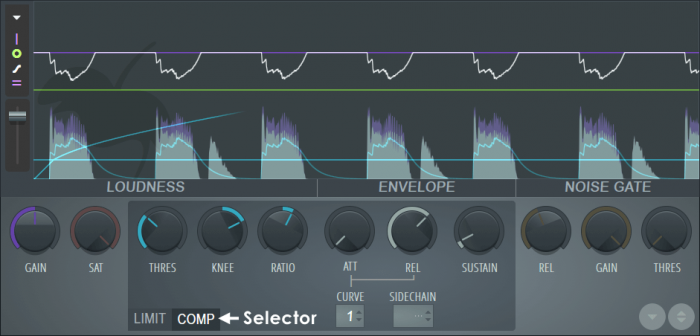Compressor vs limiter – what’s the difference?
Image Credit: Anton Ponomarev
Wondering the difference between a compressor and a limiter? Step this way for an easy cheat sheet for beginner producers.
The difference between compression and limiting is a very common music production question that beginner producers are too scared, or confused, to ask about.
It can get complicated, so let’s approach from a simplified perspective with this easy guide to audio compression and limiters.
What are compressors and limiters?
Compressors and limiters are dynamic processors, which you can insert into a track on your DAW to affect that track’s signal. Both compressors and limiters reduce the volume of a track, and they do this by setting a threshold beyond which the loudest frequencies won’t pass.
The difference between compression and a limiter lies in the threshold and ratio parameter settings on the plugin. Learn more about compressor parameters here.
A compressor narrows the dynamic range of a sound – the difference between the loudest and quietest parts. If there’s loud notes, a compressor can automatically turn down the volume of any that go above a set threshold. It does this according to whatever ratio you set.

Signals above 0dBFS can cause distortion and hard clipping, so generally you don’t want any erratic loud notes beyond that point. You could set a threshold of -10dBFS, for example, keeping optimum loudness but preventing peaking. The ratio is by how much the compressor will turn down the volume, by percentage – for every dBFS over the limit by how much it needs to be reduced by.
Compressor ratios are generally kept low, for example 2:1, which would mean for every 1dBFS over the threshold setting the sound would only be 0.5dBFS louder. This means the signal tapers away, rounding off smoothly at the top of the waveform.
Then, after you’ve set your threshold and ratio to make the loud notes quieter, you can make any quieter notes louder by turning up the gain knob, increasing the overall volume of the track.
Is a limiter a compressor?
A limiter is a juiced-up compressor. Unlike a compressor which reduces the sound of certain notes, a limiter cuts off the loudest sounds across the whole track by putting a ceiling on the highest level.

The threshold is usually 0dBFS, and the ratio is infinity:1 – it limits the mix exactly to the threshold, chopping off as an abrupt wall instead of compressing the sound with a smooth roll-off.
When do you use a limiter, and when do you use a compressor?
Whilst the theory is similar, a limiter and a compressor have different goals in mind.
As a beginner producer, the most common place to use a limiter is at the last stage of mixing, to bring up the volume of the entire track whilst preventing the audio from clipping.
When you’re releasing music online with a distributor like RouteNote, you want your audio to be of as high a standard as possible, and a limiter helps to ensure there’s no distortion whilst also making sure the volume of the whole song is loud enough.
Compression meanwhile can be used everywhere else, on individual instrument tracks. Unlike a limiter which aims to limit the maximum level, a compressor can be used less dramatically, for creative sound design.
You can use compression to even out the levels of a track, or to make some instruments stand out more than others. Head here to find out some useful ways to use compression:
So, for a basic understanding of the difference, remember:
A limiter increases the overall volume of the whole track
A compressor is used everywhere else
